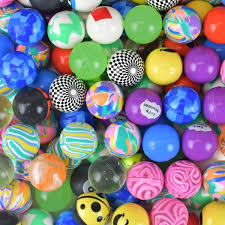
From idea conception to studying metrics, teachers might be the most skilled, effective, and responsive creators of content this side of your favorite social media site. The content creator buzz sounds everywhere: bloggers, tiktokers, podcasters, writers who research for corporations: we see the work of content creators every day.

Teachers are a special kind of content creator. They aren’t working to launch a business, market their boss’s ideas, or push followers. They generate content–pivoting to respond to real time changes–for their students. Tips and tricks for successful content creation are all over the internet, and every characteristic that makes them successful exists in a teacher’s job every day.
Here is how this monstrous group of movers operate as content creators.
Key Components of Successful Content Creators (Teacher Style)
- Teachers are relevant. This summer, my social media and blog feeds were full of ideas from teachers, collaboration between teachers, questions for those who had tried new online strategies. Teachers who have never heard of Zoom launched into trainings to remain current in their instruction. Teachers pivot hard into curating relevant resources, becoming pioneers in their own practice.
- Teachers know their audience. Teachers study the lives of their students to best engage them in learning. A colleague once told me that she could predict the grade level where a teacher worked based on how they dressed, the vocabulary they used, and (completely unsupported data about) their personality. Teachers become a little like their students, she said, because they spend more time in the classroom than they spend with peers. Perhaps that’s why, as a middle school English teacher, I was so sarcastic (grin).
- Teachers improve their skills. Teachers are perpetual students. They join books studies, take workshops, pursue advanced degrees, and enroll in summer professional development. Teachers seldom stop learning. When policies or processes change based on legislation, adopted materials, or school and district decisions, teachers become students again. Keep in mind that teachers don’t write learning standards, but they continually shift how they approach instruction based on decisions made outside the classroom or their control.
- Teachers understand KPIs (Key Performance Indicators). Teachers make decisions based on data every day, every hour! KPIs in the classroom are sometimes formal assessments where learning outcome data informs reteaching or student grouping. More often, teachers read a room, a mood, a response, and write or rewrite instruction immediately. Metrics aren’t generated by fancy algorithms or assistants; teachers cull ever-changing information among several indicators at a time and need only seconds or minutes to shift the content to match.
- Teachers network. Teachers are one of the few professions required to network. In weekly Professional Learning Communities, teams, and content area meetings, teachers contribute to shared documents, common assessments, collaborate across support teams of reading specialists, math interventionists, language supports, behavioral supports, parent organizations (to name a few). The work doesn’t work without a team, and teachers make necessary connections to move learning forward.
- Teachers offer solutions. Teachers make thousands of decisions each day. Elementary school teachers are approached by students up to 300 times an hour, no doubt by students with a question, request, or comment that requires a teacher decision. I can’t imagine the most prolific CEO being available for this kind of responsiveness.
- Teachers question everything. University faculty and preK-12 teachers sometimes struggle to generate content because they want to get it right. With a shifting education landscape, teachers are hesitant to follow one protocol, adopt one platform, accept one prediction for how to prepare for fall instruction. They generate questions, ask experts, dig up whatever data is available (not much, in these new times!). Teachers analyze each idea through the eyes of their students. Nothing gets past a caring teachers’ gaze when student safety, happiness, access, and learning are on the line.
A content creator reads, researches, writes, connects, gathers, and creates. They stay curious and open to shifts in information and become the bridge between what is new and what their audience needs to know.
Add Content Creator to the hats that teachers wear.
Maybe it should look like a crown.


